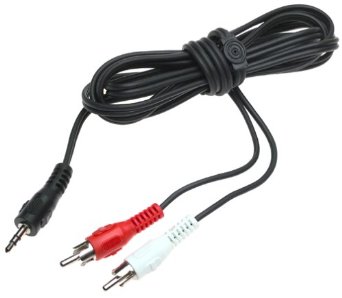The problem with the audio coming out of computers is that there simply isn't very much power, mainly because they're only designed for those little computer speakers. If you want to play a song or movie on the computer and have it sound decent, you need to use a couple of normal room speakers.
The hitch there is that normal speakers need a lot more power to get moving than a computer can provide. So the answer is to use something like this:

That's an AudioSource AMP-100 Stereo Power Amplifier, $103 on Amazon.
It's important to note when shopping for amplifiers that there are two different power ratings; RMS, the real amount of power, and 'peak power', the peak it can hit for a millisecond, which is basically worthless. If you search around Amazon for "speaker amplifier", you'll see a number of ads for a cheaper brand called 'Pyle', which cheats by advertising the peak power. Their "100-watt" unit is actually 10 watts of RMS power — which isn't much more than the computer has. So you have to be careful differentiating between the two. The AudioSource unit, above, is 100 watts RMS, or 50 watts a channel.
The speakers, themselves, also make a difference. Some older 4'-high monsters might not be near as 'efficient' as a smaller, newer 'bookshelf' model, and are going to require more power to get them to a loud level without distortion.
Along the same lines, how loud you plan on playing them enters the picture. For just your average speaker played at an average room level, 100 watts should be fine, but if you're planning on cranking them up, you'd better think in terms of 200 watts or higher. That'll also require much bigger bucks.
In all honesty, I can't officially recommend any brand over another, simply because I haven't bought one of these in decades, but the above info should get you going if you want to search around, and don't forget the user reviews at the bottom of the page.
And speaking of user reviews, there's an important point to be made if you're buying the above unit. Apparently, the 'Line 1' input has some kind of goofy feature that automatically mutes the volume if it doesn't sense any input, so use 'Line 2', which operates normally. The user reviews loved the unit but hated that feature, with a number of them bitching and moaning because they hadn't bothered to read the manual and thus didn't know that 'Line 2' doesn't use the feature.
The one other piece of equipment you'll need is this rascal:

The stereo 'mini-pin' plug on the left goes into the 'Audio Out' jack on the back of the tower and the two 'RCA cup jacks' plug into the back of the amp. Hook the speakers up to the amp and you should be good to go.
Update: Reader 'rhhardin' suggested a Radio Shack Ground Loop Isolator, so keep that in mind if you get any humming out of the speakers. It sometimes occurs when two power supplies are involved, in this case the computer and the amp.
As for there being four speaker jacks, while you could probably play four smallish bookshelf speakers at a normal volume without distortion, I wouldn't plan on anything bigger. If you don't mind snipping off the jacks of your existing computer speakers, you could wire them into the 'Speaker A' slot and put the room speakers on 'B', then switch back and forth as needs be.



